StrataFridge FDM printer
The mechanical guts of a 22yo Stratasys, reengineered & mounted in a stylish drinks fridge.
The mechanical guts of a 22yo Stratasys, reengineered & mounted in a stylish drinks fridge.
To make the experience fit your profile, pick a username and tell us what interests you.
We found and based on your interests.
andNote: I've changed the project description. The Stratasys is actually only 22 years old, not 30. This discovery comes later.
I'd already looked over the Stratasys parts when I pulled them from the original housing and I'd estimated I could likely fit the parts inside the fridge after removing some of the excess housing material.
The way the mechanics of the FDM 1650 had been built was as an aluminium plate box containing the vertical axis/bed with an existing pick & place machine on top holding the print head.
The pick & place machine was an Asymtek Automove 302.
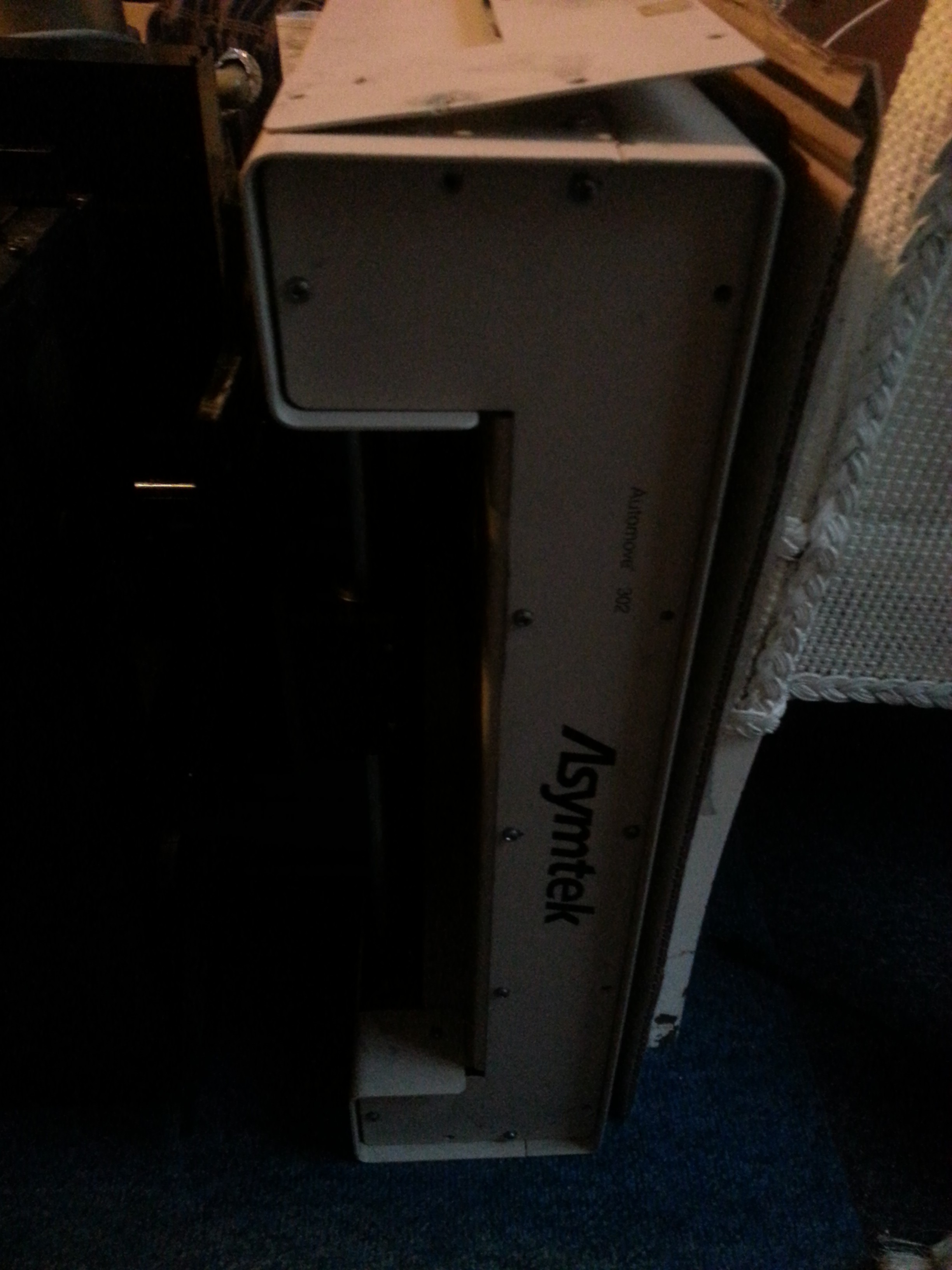
That's it's rear panel sitting on top of it. It was already off when I got to it, and the wires connecting to it had already been cut.
On it's own, that wouldn't have been too bad. There's no smarts inside it. The sum total of the electronics within consists of two stepper motors and an endstop board.
That wasn't the only problem though. In addition, I'm in the UK. This was made in the USA. Not only are all the parts and fittings imperial, they're American imperial. And half the screws are either missing, sheared off or have heads that are totally chewed up. It was easier to dismantle the housing than open the service panel.
 Okay, that actually looks pretty good!
Okay, that actually looks pretty good!
The whole thing is run with a clever web of plastic-coated steel cables and threaded capstans. The rails are really chunky at 19mm..? No, 3/4" thick exactly. And exactly 19" long.
Perhaps I could just transfer it all to a nice thick aluminium plate with a hole in the middle. Can I move the position of the motors though? Let's have a closer look at the cable.
Oh.
(I'll put the picture here when I find where I saved it)
I knew the plastic on the cable was a bit cracked, but it actually worse than I thought. It's flaked off completely in a lot of places and the cable has actually started to unwind in one portion. And this has been running over the aluminium capstans, which has left them pretty chewed up.
So the cable needs replacing. That's tricky, since it needs to be just the right length & thickness as well as plastic coated. But it's doable if I can find the right supplier. So I'll unhook it to measure it. That means I can check the pulleys too.
(I'll put the picture here when I find where I saved it)
Oh.
That's about a 2mm groove the cable's worn in the pulley over the years. It's hard to tell if the muck either side is pulverised plastic or hardened grease.
Some of the pulleys are okay, but about a third of them will need replacing, which means making new ones. And the bearings they're mounted on are wobbly, so the bearings all need replacing too.
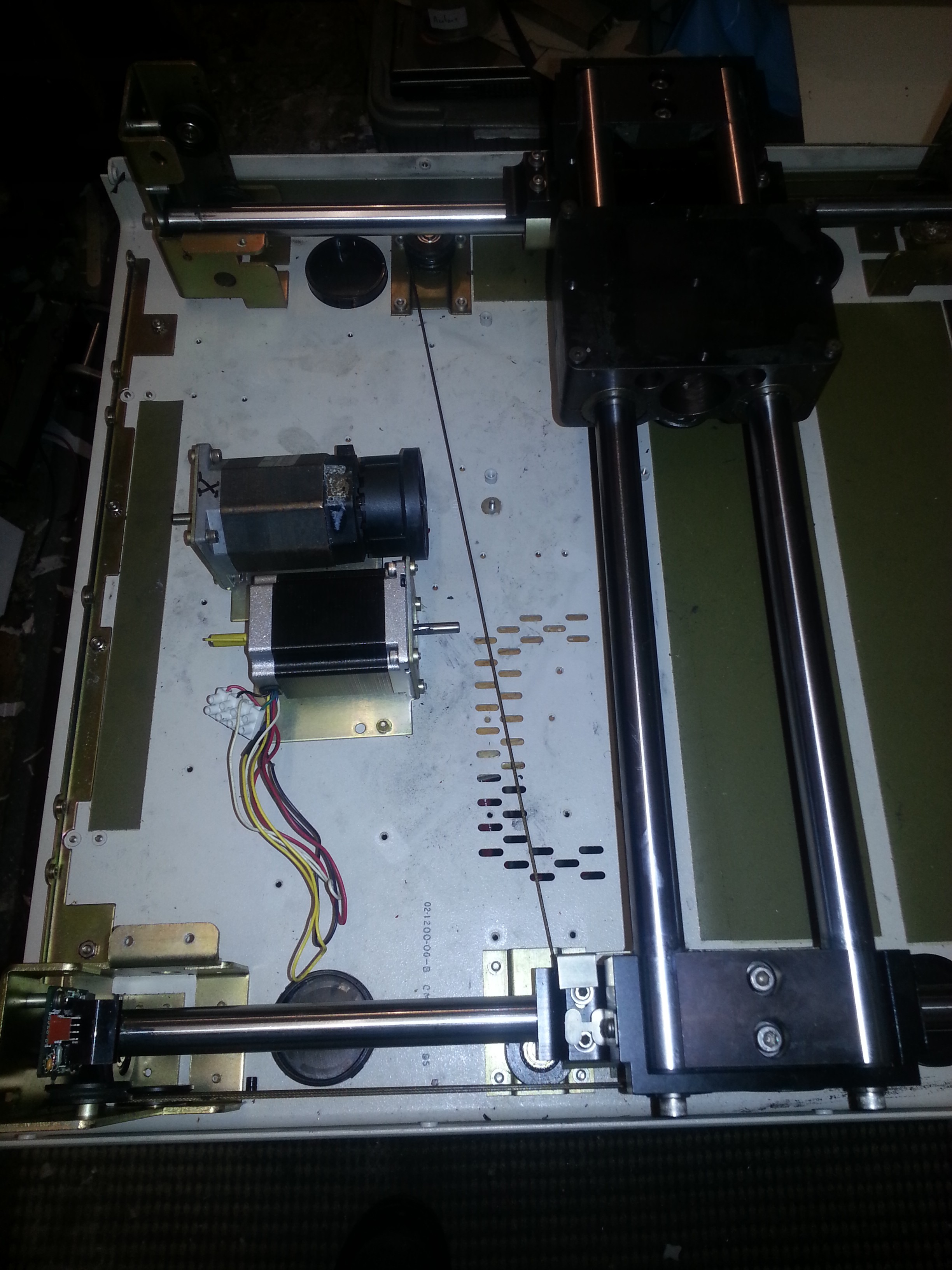
So with the cable removed, I decided to check the linear bearings. The X axis and the two sides of the Y axis.
One Y axis rail runs fine, the other sounds like it's full of sand and has some axial play. The X runs, but runs rough. So the bearings are all on their last legs.
No, it's ALL on it's last legs.
Ugh.
It's time for a change of plan.
I could, in theory, replace/remanufacture all the parts and rebuild the mechanics as they were originally. But to find the imperially sized parts will put the cost up, especially those large linear bearings. It'd cost less to build it from scratch. And if I'm doing that I can build something better.
So, what about the vertical axis? Is that usable at least?
Well, it's more usable.
Quarter and 1/8" anodised aluminium plate, four leadscrews with 1/8" pitch synchronisned belt drive from one stepper giving a 1/2000" resolution per full step. That would be very good layer resolution.
This was the one that used to blow the driver boards though. The stepper drew too much current. And looking at the weird way they arranged the linear guide makes it obvious why. It's...
Read more »andNote: I've changed the project description. The Stratasys is actually only 22 years old, not 30. This discovery comes later.
I'd already looked over the Stratasys parts when I pulled them from the original housing and I'd estimated I could likely fit the parts inside the fridge after removing some of the excess housing material.
The way the mechanics of the FDM 1650 had been built was as an aluminium plate box containing the vertical axis/bed with an existing pick & place machine on top holding the print head.
The pick & place machine was an Asymtek Automove 302.

That's it's rear panel sitting on top of it. It was already off when I got to it, and the wires connecting to it had already been cut.
On it's own, that wouldn't have been too bad. There's no smarts inside it. The sum total of the electronics within consists of two stepper motors and an endstop board.
That wasn't the only problem though. In addition, I'm in the UK. This was made in the USA. Not only are all the parts and fittings imperial, they're American imperial. And half the screws are either missing, sheared off or have heads that are totally chewed up. It was easier to dismantle the housing than open the service panel.
 Okay, that actually looks pretty good!
Okay, that actually looks pretty good!
The whole thing is run with a clever web of plastic-coated steel cables and threaded capstans. The rails are really chunky at 19mm..? No, 3/4" thick exactly. And exactly 19" long.
Perhaps I could just transfer it all to a nice thick aluminium plate with a hole in the middle. Can I move the position of the motors though? Let's have a closer look at the cable.
Oh.
(I'll put the picture here when I find where I saved it)
I knew the plastic on the cable was a bit cracked, but it actually worse than I thought. It's flaked off completely in a lot of places and the cable has actually started to unwind in one portion. And this has been running over the aluminium capstans, which has left them pretty chewed up.
So the cable needs replacing. That's tricky, since it needs to be just the right length & thickness as well as plastic coated. But it's doable if I can find the right supplier. So I'll unhook it to measure it. That means I can check the pulleys too.
(I'll put the picture here when I find where I saved it)
Oh.
That's about a 2mm groove the cable's worn in the pulley over the years. It's hard to tell if the muck either side is pulverised plastic or hardened grease.
Some of the pulleys are okay, but about a third of them will need replacing, which means making new ones. And the bearings they're mounted on are wobbly, so the bearings all need replacing too.

So with the cable removed, I decided to check the linear bearings. The X axis and the two sides of the Y axis.
One Y axis rail runs fine, the other sounds like it's full of sand and has some axial play. The X runs, but runs rough. So the bearings are all on their last legs.
No, it's ALL on it's last legs.
Ugh.
It's time for a change of plan.
I could, in theory, replace/remanufacture all the parts and rebuild the mechanics as they were originally. But to find the imperially sized parts will put the cost up, especially those large linear bearings. It'd cost less to build it from scratch. And if I'm doing that I can build something better.
So, what about the vertical axis? Is that usable at least?
Well, it's more usable.
Quarter and 1/8" anodised aluminium plate, four leadscrews with 1/8" pitch synchronisned belt drive from one stepper giving a 1/2000" resolution per full step. That would be very good layer resolution.
This was the one that used to blow the driver boards though. The stepper drew too much current. And looking at the weird way they arranged the linear guide makes it obvious why. It's...
Read more »The original Stratasys FDM 1650 that the London Hackspace was donated was apparently built by one of the now directors of the company when they first joined the company. Which is an amusing way of saying; it was really old.
It was also really big. Think of the tumble-driers you use as a laundrette, but could only produce prints the same size as a modern kit printer. Though admittedly, at fine resolution.
The mechanical elements were the best bit of it. The bed used four ballscrews with a vertical resolution of 1/2000" at full step. The XY was handled by an Asymtek Automove 302, which I gather was an early high-spec pick-&-place head. But we'll get to that on the next log entry.
These great parts were in an oversized environmental enclosure, and I liked the idea of bringing it down to the size of household whitegoods. In the UK at least, that's 600mm wide and the same for kitchen cabinets. I also already use a large commercial display fridge as a heated cabinet for keeping my resins at their ideal storage temperature. A fridge is basically just an insulated box and commercial ones tend to lack weird internal mouldings. From the main guts of the Stratasys, I figured I could fit them inside a fridge with a 600mm outside width.
After a couple of weeks I managed to find one of close-enough size on ebay that was also within collection distance.
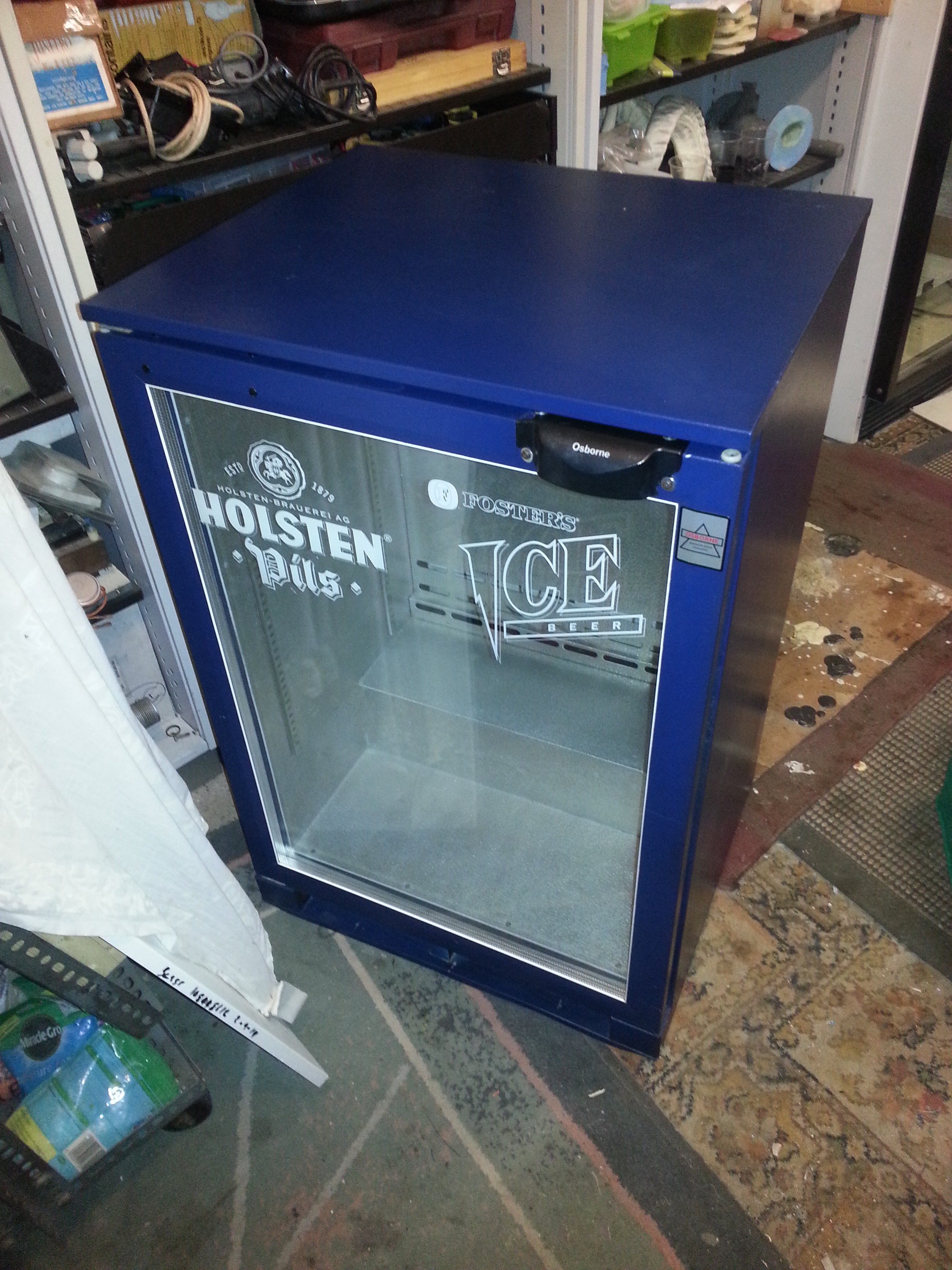
Once I peel off those decals, it'll look really cool with items printing inside in a nice warm environment.
First though, let's pull out the refrigeration unit.
I didn't have to worry about releasing the gas into the air because this fridge was sold as non-functional and in need of regassing. But just the same, it didn't look like it'd be hard to remove in one piece.
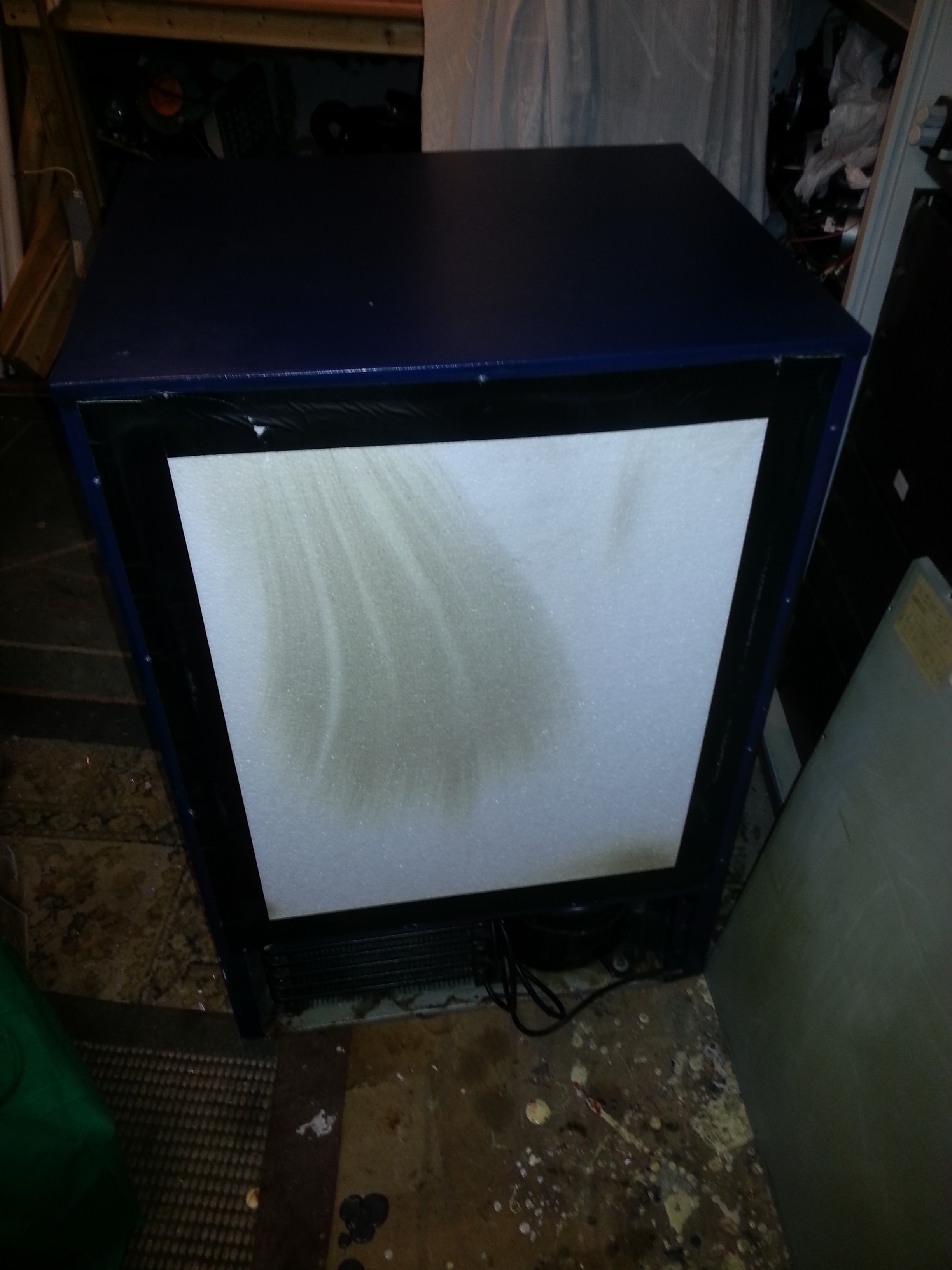
After removing the rear panel; issue one. That's expanded polystyrene, not the urethane foam I was expecting. Also, it's held in place with duct-tape, apparently from the factory.
The polystyrene is a problem. ABS best prints with an ambient temperature of 70-90°c. While polystyrene melts at 240°c, it's very flammable. And during long-duration prints it's possible something could go wrong enough to get a single point of ignition & send the whole thing up. The insulation will need to be swapped out for something more durable.
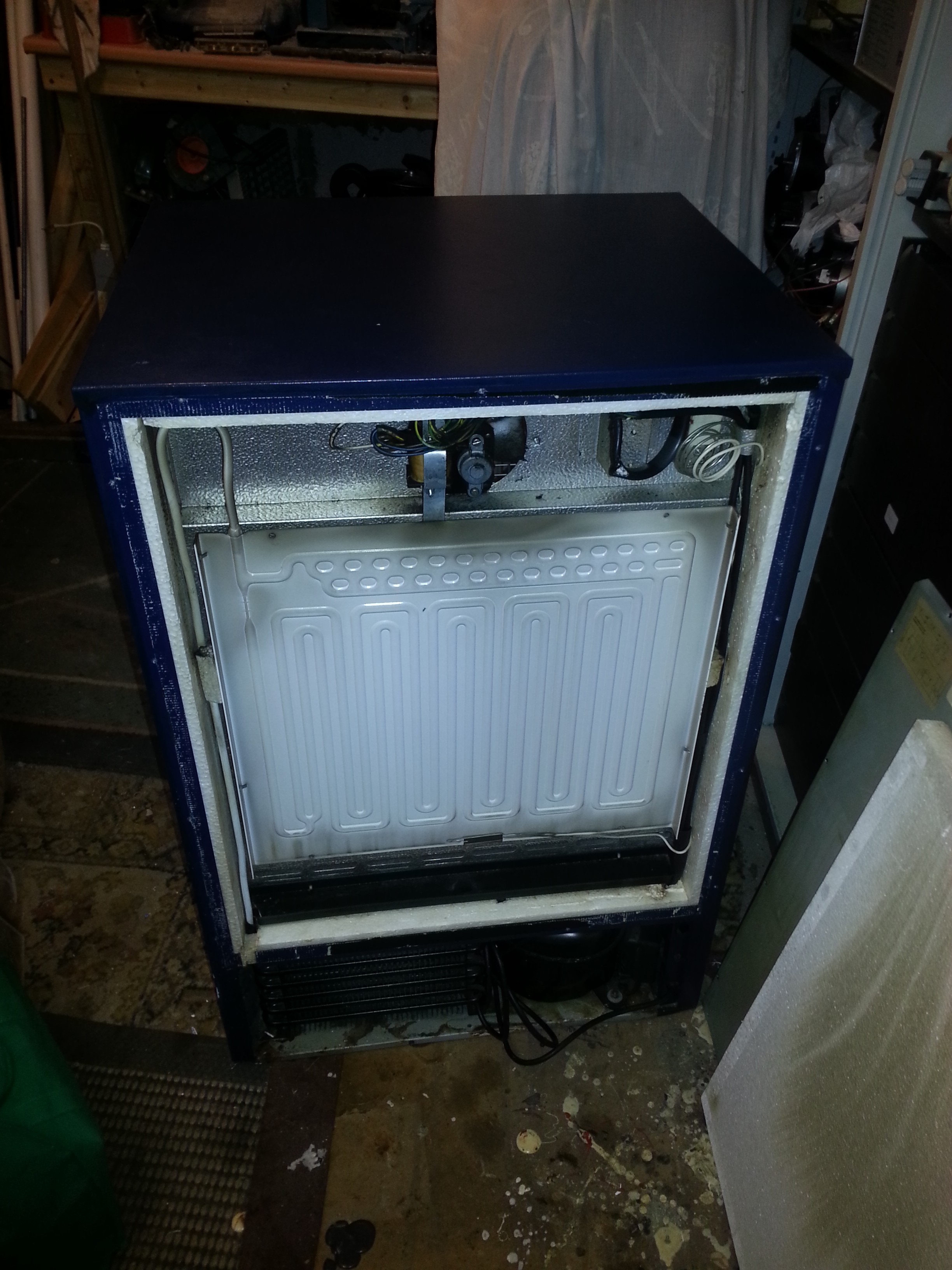
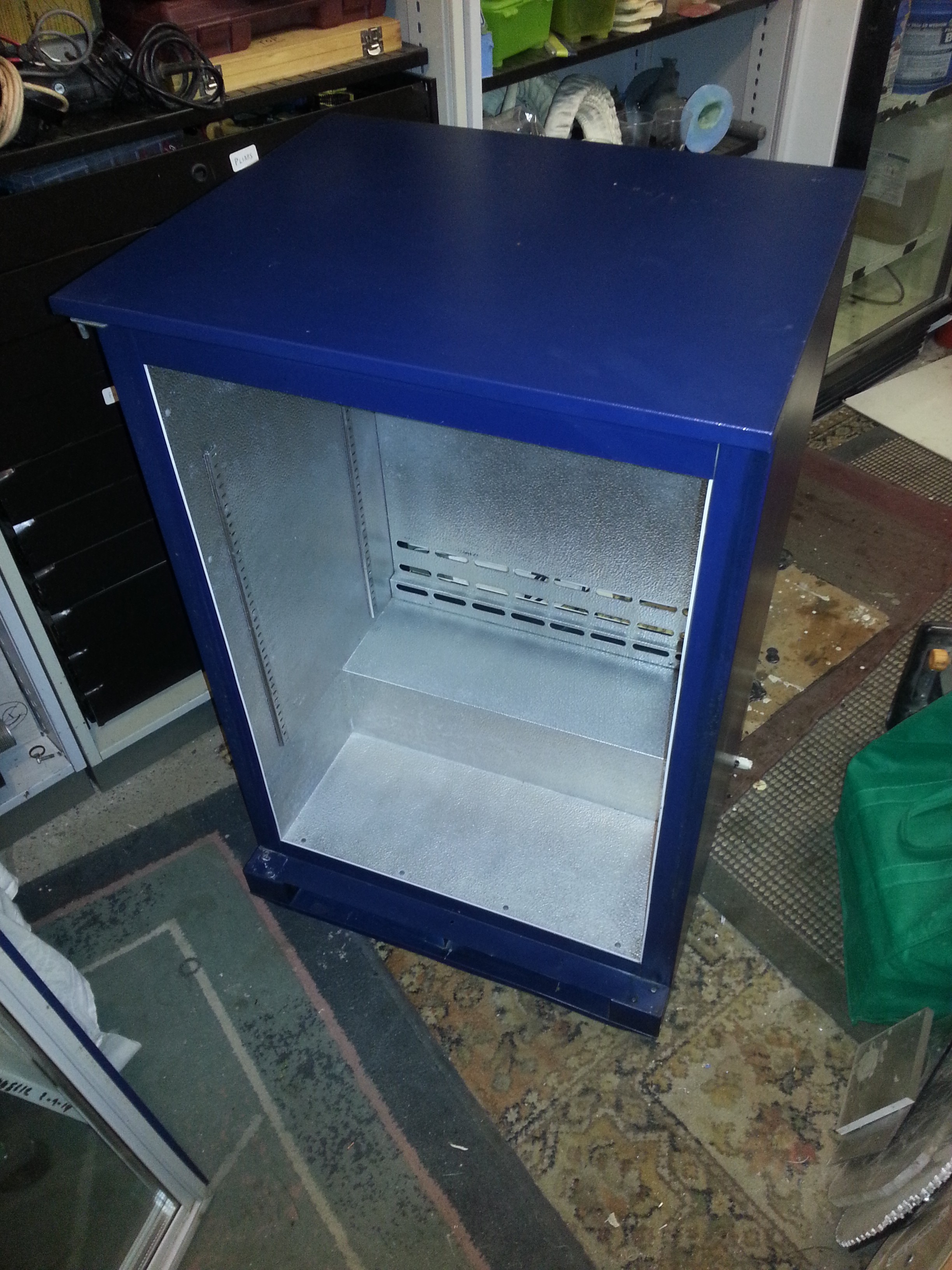
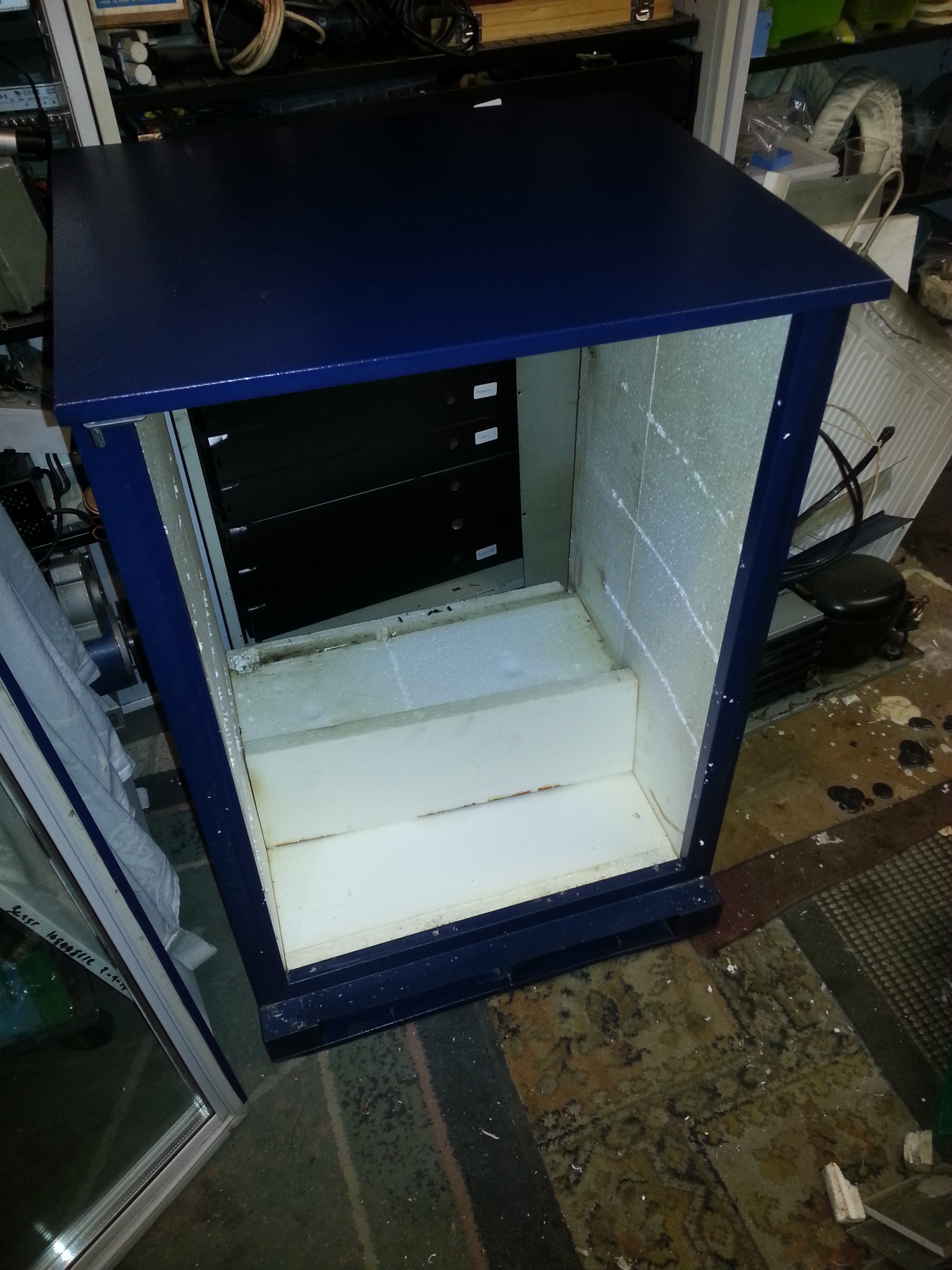
Aside from some rust under it at the bottom and a few small dents, the shell should do fine. I may need to make some alterations to the liner though. At very least, the ventilated back piece will need swapping out. The existing shelf-mounts may be fine for holding the printer guts.
Let's get those decals off the door quickly and call it a night.

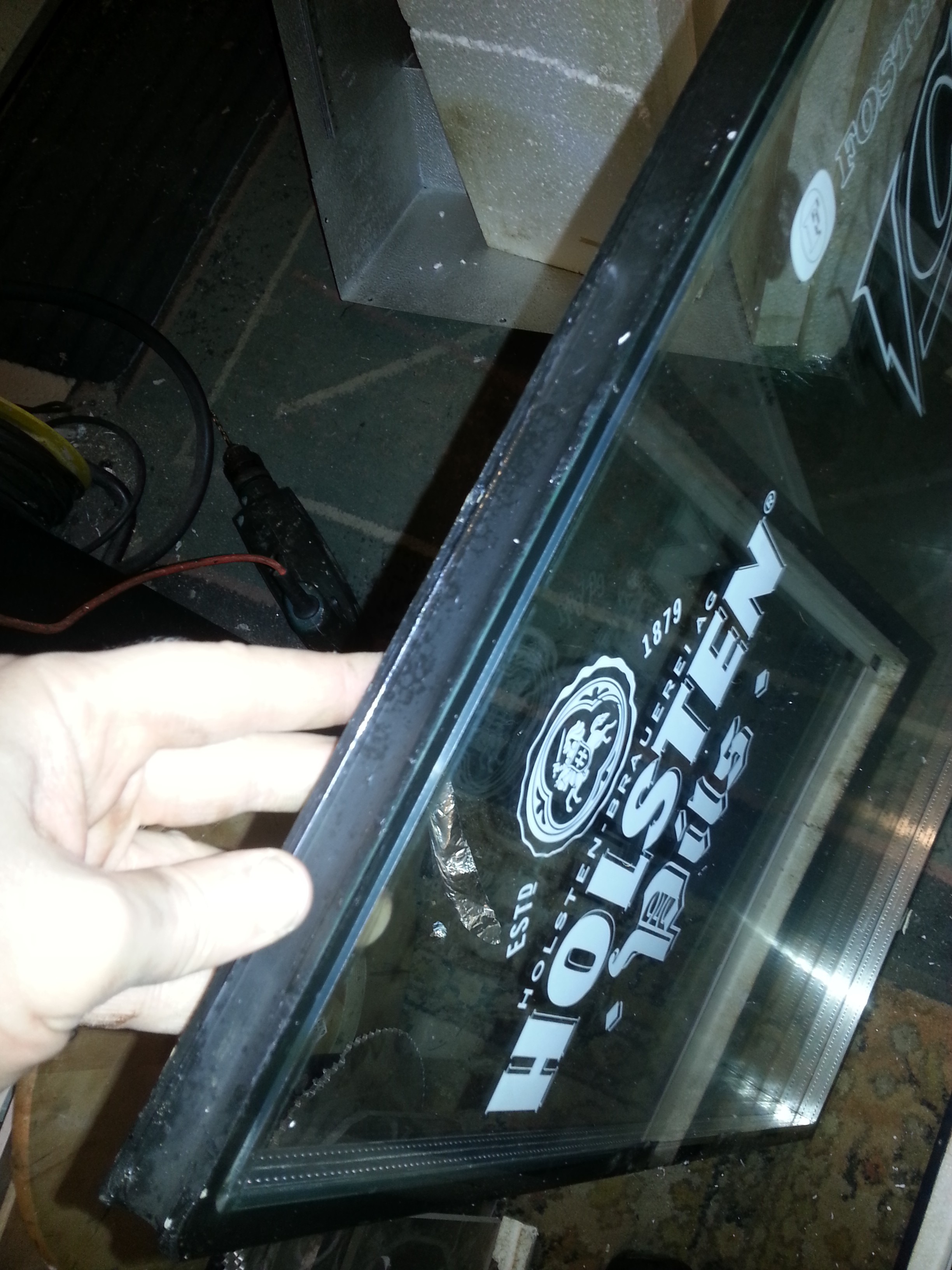 Oh.
Oh.
There's no extra layer sandwiched to the front like I thought. The decals are painted on the INSIDE...
Read more »
Create an account to leave a comment. Already have an account? Log In.
Become a member to follow this project and never miss any updates

 Chris
Chris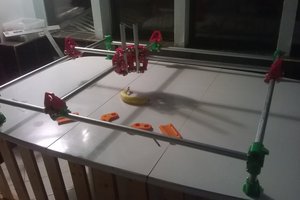
 ken.do
ken.do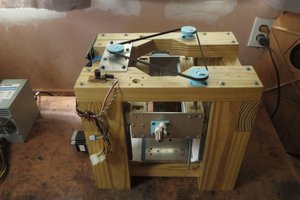
 dekutree64
dekutree64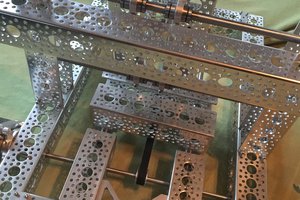
 John Baichtal
John Baichtal